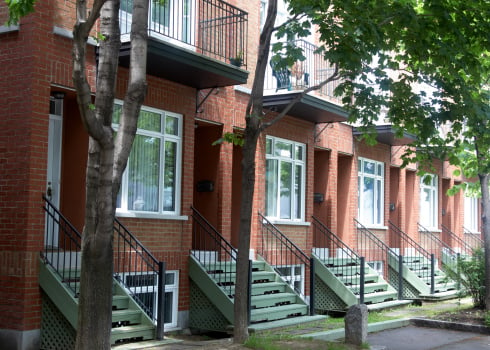Housing
Washington, Chicago, New York Post Smallest Gains on Case-Shiller July Index
Published:
Last Updated:

The largest year-over-year gains came in San Francisco (up 10.4%), Denver (up 10.3%) and Dallas up (8.7%). The largest month-over-month gains came in Portland and Dallas, where prices rose 1.3% and 1.2%, respectively, compared with June.
The S&P/Case-Shiller home price index for July increased by 5% year over year for the 20-city composite index and by 4.5% for the 10-city composite index. The national index rose 4.7% year over year, compared to a 4.5% gain in June. The consensus estimate for the year-over-year 20-city index called for growth of 5.2%.
Month over month, the 10-city and 20-city indexes each rose 0.6%, while the national index gained 0.7%. On a seasonally adjusted basis, the 10-city and 20-city indexes fell 0.2% from June to July. All 20 cities reported increases in May before seasonal adjustment; after seasonal adjustment, 10 were down, nine were up and just one was unchanged.
ALSO READ: Cities With the Fastest Growing (and Shrinking) Economies
The index tracks prices on a three-month rolling average. July represents the three-month average of May, June and July prices.
Average home prices for July remain comparable to their levels in the winter of 2005.
The chairman of the S&P index committee said:
The S&P/Case Shiller National Home Price Index has risen at a 4% or higher annual rate since September 2012, well ahead of inflation. Most of the strength is focused on states west of the Mississippi. … The economy grew at a 3.9% real annual rate in the second quarter of 2015 with housing making a major contribution. Residential investment grew at annual real rates of 9-10% in the last three quarters (2014:4th quarter, 2015:1st-2nd quarters), far faster than total GDP. Further, expenditures on furniture and household equipment, a sector that depends on home sales and housing construction, also surpassed total GDP growth rates. … An interest rate increase by the Federal Reserve, now expected in December by many analysts, is not likely to derail the strong housing performance.
Compared with their peak in the summer of 2006, home prices on both 10-city and 20-city indexes remain down about 11% to 13%. Since the low of March 2012, home prices are up 34.4% and 35.7% on the 10- and 20-city indexes, respectively.
ALSO READ: 10 Cities Where You Don’t Want to Get Sick
Want retirement to come a few years earlier than you’d planned? Orare you ready to retire now, but want an extra set of eyes on your finances?
Now you can speak with up to 3 financial experts in your area for FREE. By simply clicking here you can begin to match with financial professionals who can help you build your plan to retire early. And the best part? The first conversation with them is free.
Click here to match with up to 3 financial pros who would be excited to help you make financial decisions.
Thank you for reading! Have some feedback for us?
Contact the 24/7 Wall St. editorial team.